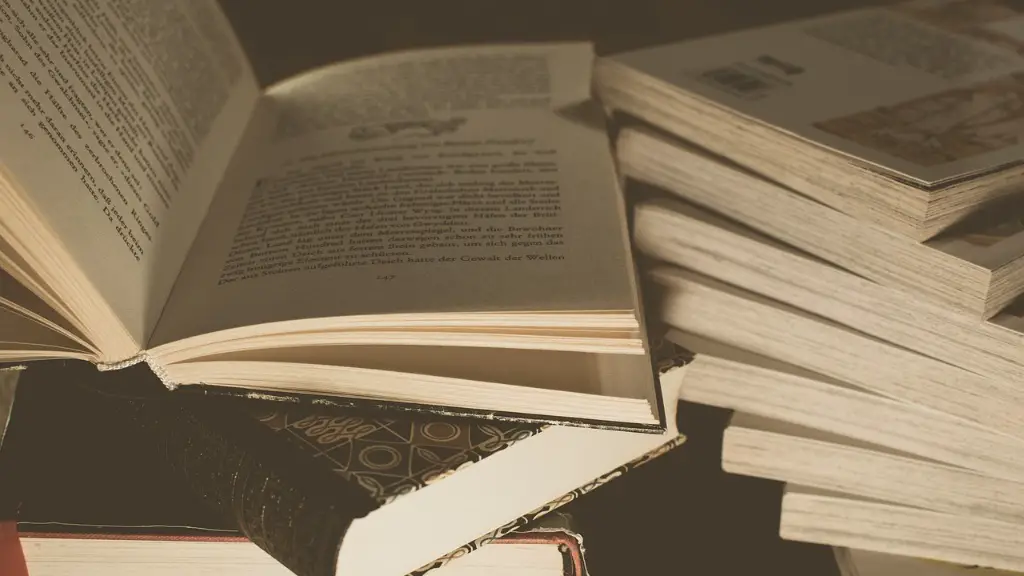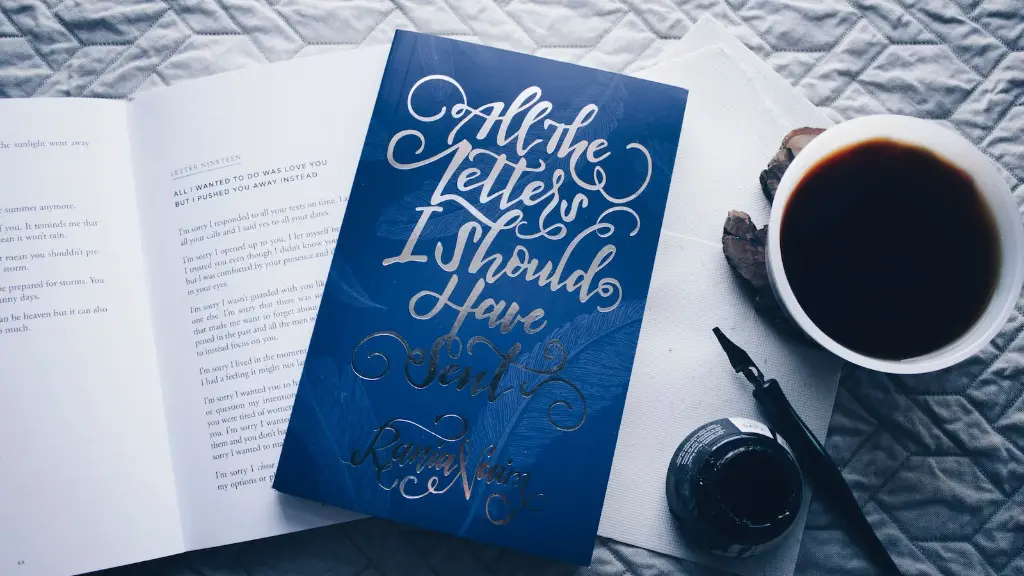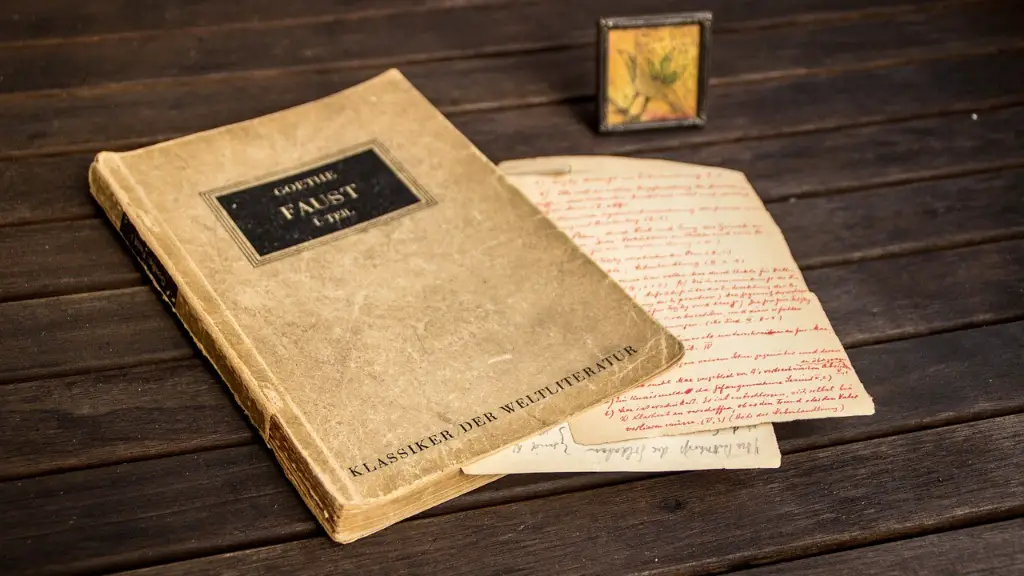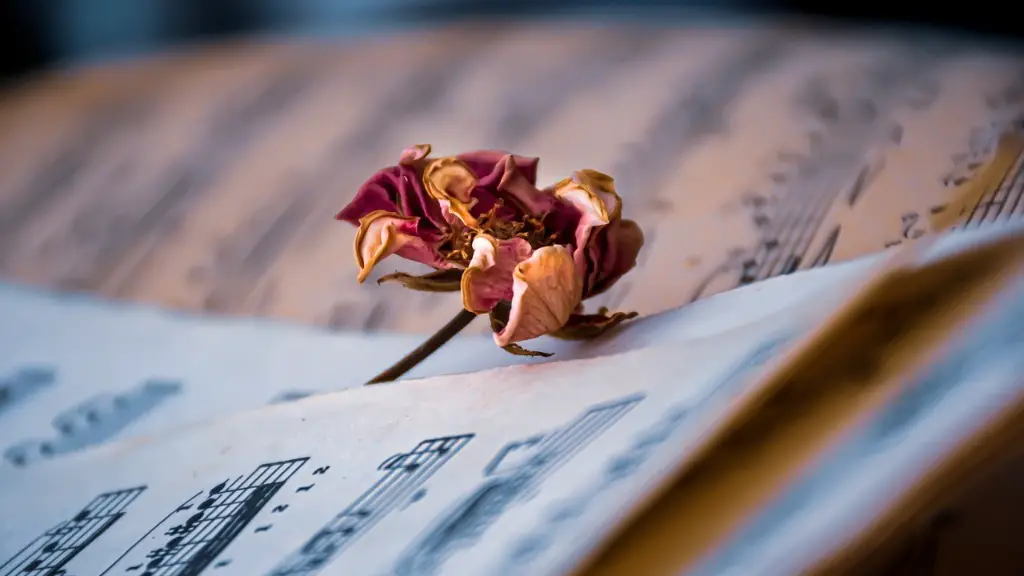Poetry is a form of creative expression which has been there for generations, connecting us across cultures and traditions. The English language has had an especially long and varied history of poetry, stretching back over centuries, and this has resulted in poetry being a part of our lives. There are many different types of poetry and each has its own specific features, but they all share some common strands which can help to explain what poetry is and what it consists of.
The most common definition is that poetry is the art of expressing emotion and ideas by the use of meaningful language and figures of speech. It includes rhymes, metaphors and vivid imagery and has a unique musical quality which can be found in the words, rhythm, syllabic structure, and alliteration. Poetry has a way of communicating messages or feelings without the use of words, and it is often said that it is an untamed and wild language.
Poetry has the capability to reach deep into the ashen depths of our souls, as it can explain and elucidate difficult and complex thoughts and emotions that we would normally struggle to express in traditional communication. This is why poetry has and always will be such an important part of the human experience. It offers us an opportunity to step outside of the material world and open the doors to our hearts and minds and explore the sacred and forbidden, the tender and dark.
Central to what poetry consists of is the role of imagery and symbolism. Poets rely on their use of imagery and symbolism to express their thoughts and feelings as it helps to create a visual, imaginative, and emotional world for the reader. Imagery is the use of words to form an image in the mind of the reader, such as a landscape or an emotion that stirs within them. Symbolism is the use of symbols or objects to represent an idea or feeling, and it can enhance the poetic experience.
Apart from imagery and symbolism, one of the most essential aspects of poetry is its use of language. Poets often employ techniques such as alliteration, assonance, rhyme, onomatopoeia, or paradox to create a vivid and powerful effect. By blending together these techniques, poets create art that is capable of captivating its audience and stirring up passionate emotion. The best poets understand that each word is an opportunity for them to paint a vivid picture and evoke a strong reaction in the reader.
Finally, what poetry consists of is not just the words on the page, but also the silences and spaces between them. This is known as white space, and it allows readers to pause, reflect and contemplate the words they have read and understand the deeper meaning and messages being communicated. White space can be used to emphasize certain words or phrases, or even bring about a sense of tension or drama.
Metaphors and Similes
Poetry often hugely relies on metaphors and similes in order to accurately express complex themes and ideas. A metaphor is a comparison between two unlike things and can be used to express abstract concepts that one cannot actually see or touch. A simile is a type of analogy, which is a comparison using a form of ‘like’ or ‘as’, and it also serves to make a metaphor more vivid. Both metaphors and similes help to draw a reader into the emotions and feelings of the poem, making them easier to understand.
In order to effectively use metaphors and similes, poets must have an in-depth understanding of the language and be able to provide strong and vivid comparisons that accurately represent their ideas and feelings. They must also be able to weave metaphors and similes throughout the poem so that it has a strong impact on the reader.
Rhythm and Rhyme
Rhythm and rhyme are two of the most important elements of poetry. They are used to give poetry its unique musical quality and bring about a sense of emotion for the reader. Rhythm is the natural sound of language and is the basis of the poem’s musicality and flow. Rhyme is the repetition of sound, usually syllables, at the end of lines to create a musical effect. Rhyme is often used to give a poem structure and form and can be used to add a sense of humour or drama.
The use of rhythm and rhyme involves a lot of creative craftsmanship and manipulation of language. Poets must be able to work with the sounds of words and find a way to naturally integrate rhythm and rhyme in their poems without sounding forced or unnatural. They must also be able to pick out rhythms and create patterned word placements that fit their ideas and message.
Ultimately, the things that poetry consists of are the same ingredients that give it its unique power and beauty.
At its core, poetry is a universal form of expression, connecting us all by allowing us to examine and explore the complexities of life and emotions. It is this ability to express powerful messages through the use of language, imagery, symbolism, rhythm, and rhyme that makes poetry so meaningful and enduring. By understanding what poetry consists of and how to use it, readers, writers, and life-long admirers alike can get lost and find themselves in the words of beautiful poetry.
Style of Poetry
The style of a poem refers to how the poem is written, and it includes the structure, form, and sound of the poem. Poetry can be written in either a set form or a free form and can be descriptive or narrative in nature. Some popular forms of poetry include haiku, sonnet, epic, and villanelle. Each style of poetry has its own features and techniques, and they all bring forth a different type of emotion and impact.
In terms of structure, a poem can either be written in verses or stanzas or naturally, without any given structure. It also can vary in length, ranging from a few words to hundreds of lines. The form chosen by the poet depends mainly on their message and how they want to communicate that message. Finally, a poet can also incorporate different sounds and patterns into the poem, such as assonance, alliteration, and onomatopoeia, to create a certain effect and to reflect the emotion of the poem.
Poetic Devices
Poetic devices are words, phrases, or images that have a special meaning and are used to create a vivid impression in the reader’s mind. These devices can include metaphors, similes, alliteration, onomatopoeia, paradoxes, and symbols. They are often used by poets to explain complex concepts and convey emotions that cannot be expressed with mere words.
By incorporating poetic devices into a poem, poets can take the poem to the next level and create a one-of-a-kind experience that helps the reader to understand the poem more deeply. It is important to note, however, that these devices should be used sparingly and in the right context in order to avoid overusing them. Only in this way can they create the desired impact.
Role of the Reader
poetry is not a one-way street, but an ongoing interaction between the poet and the reader. The reader has an integral role to play in understanding and interpreting poetry. A poem cannot be fully understood without the reader’s knowledge and experience, which is why it is so important for readers to have a clear understanding of the poem’s themes, symbols, and devices. By critically engaging with the poem, the reader can gain invaluable insight into the poet’s message and open up a whole new world.
It is also important to note that the poem is only as powerful as the feelings it evokes in its readers. This goes back to the idea of poetry being an untamed and wild language, as it can reach beyond words to stir up strong and passionate emotion in its readers. The best poetry is the kind that invites readers to join in an unforgettable journey and experience a whole new world through the poet’s eyes.




